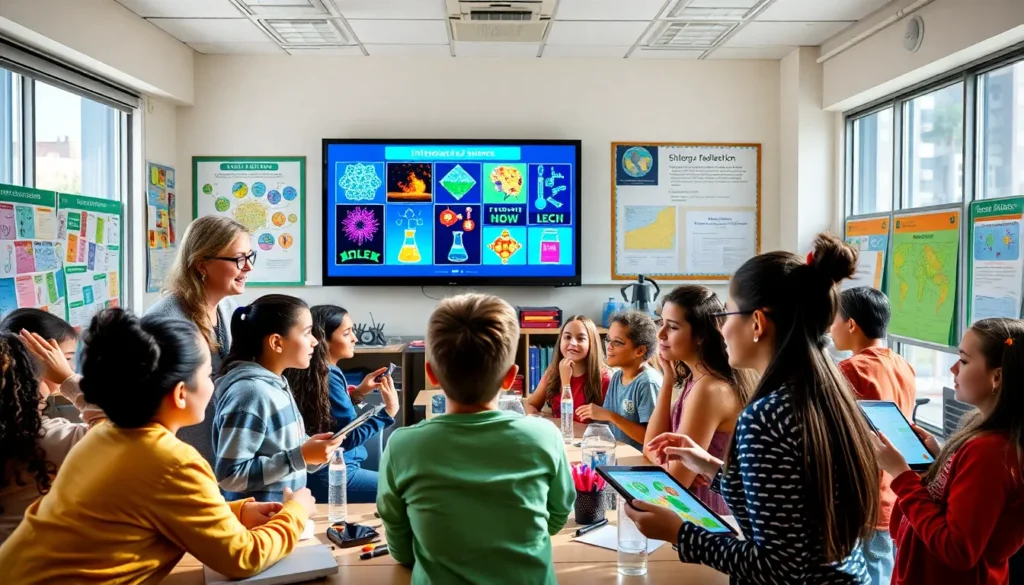Table of Contents
ToggleThe integration of science education is not merely a teaching method but a transformative approach that reshapes how students grasp complex scientific concepts. By promoting connections across various scientific disciplines, integrated science education fosters a deeper understanding and a more engaging learning environment. This article explores the potential of Redwebzine in advancing integrated science education, highlighting its benefits, real-world applications, resource allocation, successful case studies, and future directions.
Understanding Integrated Science Education

Integrated science education combines elements from multiple scientific disciplines, biology, chemistry, physics, and earth science, into a cohesive learning framework. This approach emphasizes the interconnectedness of scientific concepts, enabling students to see how different fields of science influence one another. By breaking down the traditional barriers between subjects, integrated science education helps students develop a more comprehensive understanding of the natural world. Research has shown that this method not only enhances knowledge retention but also promotes enthusiasm and curiosity among learners.
The Role of Redwebzine in Science Education
Redwebzine serves as an innovative platform offering rich resources dedicated to integrated science education. Its extensive digital library includes articles, interactive modules, and multimedia content that cater to diverse learning styles.
Key Benefits of Integrated Science Education
One of the primary benefits of integrated science education is that it encourages students to apply their knowledge in real-world scenarios. By understanding how various scientific disciplines interact, students are better prepared to tackle complex problems. Also, this educational approach promotes collaboration among students, fostering teamwork skills essential in modern workplaces.
Engagement and Interactivity
Through Redwebzine, learners can access interactive simulations and hands-on activities that make science more engaging. These resources not only capture students’ interest but also enhance their learning experience by allowing them to experiment and explore concepts actively.
Critical Thinking and Problem Solving
Integrated science education emphasizes critical thinking and problem-solving skills. With resources from Redwebzine, educators can present challenges that require students to think critically and analyze data from multiple disciplines. This prepares them to approach scientific questions with a holistic mindset, a critical skill in any scientific career.
Real-World Applications
The applications of integrated science education extend far beyond the classroom. In today’s world, students must understand how science impacts global challenges such as climate change, healthcare, and technology. Through Redwebzine, students can explore case studies and current scientific advancements, connecting classroom theory to real-life issues.
Challenges in Implementing Integrated Science Education
Even though its advantages, implementing integrated science education presents several challenges. Many educators may lack the necessary training or resources to effectively teach using an integrated approach. Also, traditional assessment methods often fail to capture the complexity of integrated learning, making it difficult to measure student success accurately.
Curriculum Development and Teacher Training
To overcome these challenges, adequate curriculum development and teacher training are essential. Redwebzine offers professional development opportunities for educators, equipping them with innovative teaching strategies that align with integrated science education principles. By investing in teacher training, schools can enhance their science programs and improve student learning outcomes.
Resource Allocation and Accessibility
Resource allocation plays a crucial role in the successful implementation of integrated science education. Schools need access to adequate materials, technology, and funding to support innovative teaching methods. Redwebzine’s commitment to accessibility is significant: it provides free educational content, making it easier for educators in underfunded areas to carry out engaging science lessons. Ensuring that all students have access to quality resources is vital for fostering an equitable learning environment.
Case Studies of Successful Integrated Programs
Several schools have successfully integrated science education, showing promising results. For instance, a high school in California revitalized its science curriculum by utilizing Redwebzine’s resources. Teachers reported improved student engagement and higher test scores, attributing these successes to the hands-on, interdisciplinary learning experiences provided. Another example comes from a middle school in New York, where science clubs based on integrated concepts led to an increased interest in STEM careers among students. These case studies highlight the effectiveness of integrated science education in real-world settings.
Future Directions for Redwebzine and Integrated Science Education
Looking forward, Redwebzine has the potential to further enhance integrated science education by expanding its resource offerings and fostering partnerships with educational institutions. Collaborating with universities and industry experts can provide students with access to cutting-edge research and innovation. Also, incorporating feedback from educators will be key to refining the content and tools available on the platform, ensuring they meet varying educational needs.
Conclusion
Integrated science education represents a vital step toward modernizing science instruction and making it relevant to students’ lives. By harnessing the resources of platforms like Redwebzine, educators can enhance their teaching methods and inspire the next generation of scientists. With continued investment in resources, curriculum development, and teacher training, integrated science education can drive engagement, critical thinking, and a deeper appreciation of the interconnected world.



